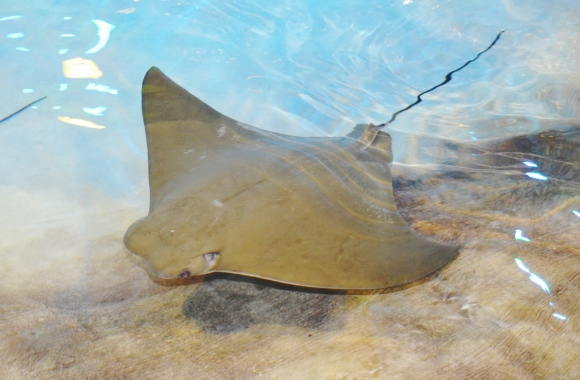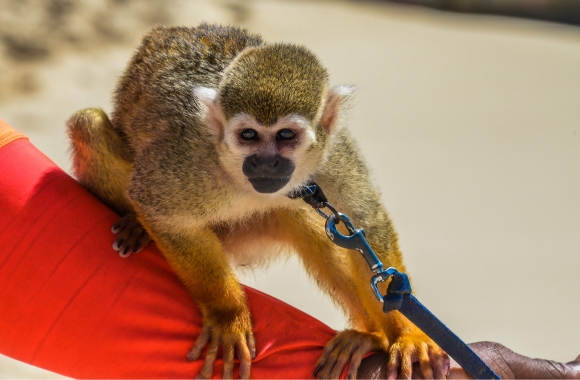FAQs on Zoos
Is there is a difference between accredited zoos and roadside zoos?
Born Free USA believes that no wild animal should be born into a life in captivity in order to be exhibited for entertainment, nor do we believe that the complex animal welfare needs of wild animals can ever be fully met in captivity. In this way, while there are certainly some zoos which provide better accommodation and care for their animals than others, no zoo can provide the life that the animals held captive there were meant to live. We believe that wildlife belongs in the wild.
What is the difference between a zoo and a sanctuary?
A sanctuary exists to give animals that cannot be returned to the wild a suitable home where they can live out the rest of their lives in accordance with their natural behaviors, to the extent possible. A legitimate, accredited1 sanctuary does not use animals for profit, only takes animals that cannot be returned to the wild (and does not breed them), and is either closed to the public entirely or highly regulates the access the public has to its facility. It is based around the needs of the animals, rather than attempting to balance the needs of the animals with those of human visitors. Zoos, on the other hand, generally breed wild animals with the specific purpose of displaying them for their lifetimes; guaranteeing that generation after generation live in perpetual captivity.
Don’t zoos help conservation?
Zoos argue that they exist in order to support conservation efforts, often pointing to the breeding of threatened or endangered species in captivity as an example of this work. But animals bred in zoos will remain in zoos for the entirety of their lives with very few individual exceptions. They will not be released to the wild and will not contribute to the repopulation of their species. Importantly, the vast majority of animals in zoos are not even endangered. In fact, research has confirmed that 78% of animals in ISIS network zoos are not threatened in the wild at all2 and, as such, breeding these animals in captivity serves neither potential, nor practical, conservation purposes.
Zoos tell us that they need to hold species captive, even those which are not threatened in the wild because, even if those animals don’t get released, people only support conservation if they get to the see the animals in real life. The suggestion is that zoos collect the entrance fees that people pay to see the animals and act as a conduit for conservation funding. But this argument doesn’t add up either. The two largest financial contributors to global conservation efforts are two individual not-for-profit organizations. According to the zoo industry’s own research, these two charities give more independently of one another than the entire membership of the World Association of Zoos and Aquariums (WAZA) combined.3 There is no need to hold animals captive in order to generate conservation funding.
But aren’t zoos educational?
Born Free USA believes that holding millions of animals captive for their lifetime, even if it did provide some kind of educational benefit, is unethical; particularly when there are more effective ways of teaching young people about the natural world without holding animals captive at all. Regardless of the ethical concerns surrounding zoos and education, research carried out in recent years showed that zoos fail to educate young people and, in fact, may have a negative educational impact. A study which was widely promoted by the zoo industry demonstrated that only 38% of children who were assessed as part of a zoo visit demonstrated positive learning outcomes and that 62% of children showed either no change in learning or, worse, experienced negative learning during their zoo visit.4 This perhaps should not be surprising. Zoos show wild animals out of context, outside of their natural environment and often displaying unnatural behaviors, known as stereotypies, not seen in the wild.
We should also remember that the argument that children must see animals in real life to learn or care about them is a bizarre suggestion given that our entire global school system is based around classroom learning delivered by talented educators. In addition, we all know a child fascinated by dinosaurs, or space travel, or fairy tales, or ancient history; none of which can be experienced in real life but all of which can be learned and loved by children the world over. We should not underestimate young people’s imagination, empathy or capacity for learning, nor should we negate the ability of talented educators who instill love, wonder and interest in children across a diverse range of subjects. Instead, we should be encouraging novel, exciting and caring new ways to learn about the things that are important to them.
Zoos let children see animals they would never get to see otherwise, how are we going to get them to care about animals they never see?
With today’s technology, children can look at and learn about animals in faraway places from wherever they are in the world. The internet, photographs, videos, and documentaries are all useful tools in helping teach children about animals. When a child sees these animals in zoos, they learn that their ability to see this animal in person is more important than the animals’ right to live a free and natural life. When a child learns about animals in the wild, they learn to respect that animal and their needs.
Returning to the article highlighted above which found zoos can have a negative learning outcome for children, the same research also found that children did not feel empowered by their zoo visit to make a difference in the conservation of animals and their habitats. So, even if we would like zoo visits to result in care and, ultimately, protection of animals, that is not what zoo visits appear to be delivering in practice.
If zoos close and their animals can’t be returned to the wild, and there aren’t enough spots in sanctuaries, won’t thousands of animals be euthanized?
It is unrealistic to think that zoos would all close down with immediate effect, but we believe the process of phasing out zoos must begin now. This process would include no new zoos being licensed, an end to breeding animals for a lifetime of captivity in existing zoos, and a conversion of the remaining zoos to sanctuary models which actively rescue animals in need and provide them with a home for life.
This process would take decades, and see a gradual reduction in both zoos and the number of animals held by them globally.
What about zoos that take in and rehabilitate injured wildlife?
While some zoos may take on a small number of rescued animals, zoos carrying out rescues are few and far between. By their own admission, zoos breed animals according to carefully-managed stud books so they are not in the business of taking on animals whose lineage they cannot trace and who will not contribute to their breeding programs. Zoos are generally not rescue centers and they don’t tend to promote themselves as such. In addition, some zoos kill animals considered surplus to requirements that they have deliberately bred there.
Sanctuaries are sometimes given the opportunity to rescue these animals from zoos when the zoos no longer want them or when animals are confiscated. Some zoos have also sold animals into the pet trade. A small number of monkeys that our sanctuary team currently cares for were sold by zoos into private ownership and later rescued.
Aren’t animals in zoos better off since they are protected from predators and have access to veterinary care?
It’s true that wild animals in captivity do not face many of the dangers of the wild, but they also miss out on all its benefits. Zoo enclosures are typically a small fraction of the range an animal would occupy in its natural habitat, are not as rich as a wild environment, and do not allow for natural behaviors (like hunting, or complex socializing). They also lose their freedom of movement, can be transferred between facilities multiple times in their life, and are forced to be on constant display for spectators. This type of stress often leads to repetitive or harmful behaviors, known as stereotypies. Importantly, stereotypies have not been observed in free-living wild animals, yet are rife among animals living in zoos. In fact, despite the fact that animals in zoos face no predators and receive medical care, several species have lower life expectancy in captivity than they do in the wild, because they aren’t adapted to life in captivity and can’t take the stress.
It should be noted that not all zoos provide adequate veterinary care. We care for a number of primates formerly held by zoos who were denied the most basic medical care and suffer from serious medical conditions as a result.5



